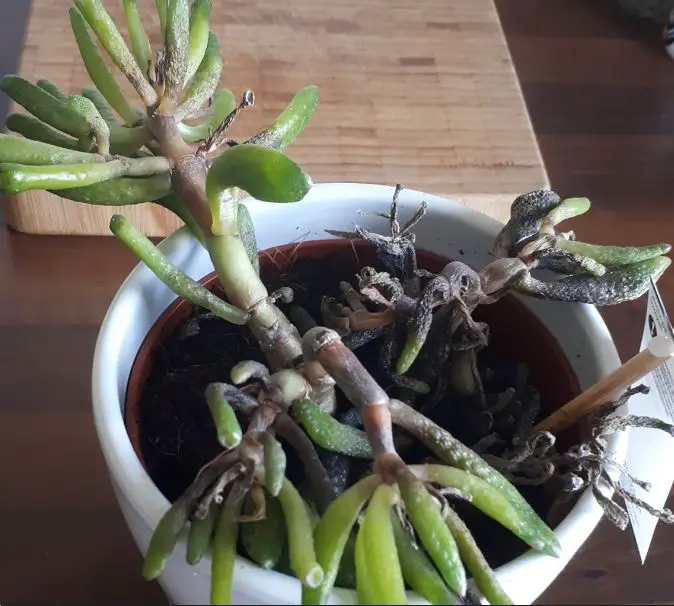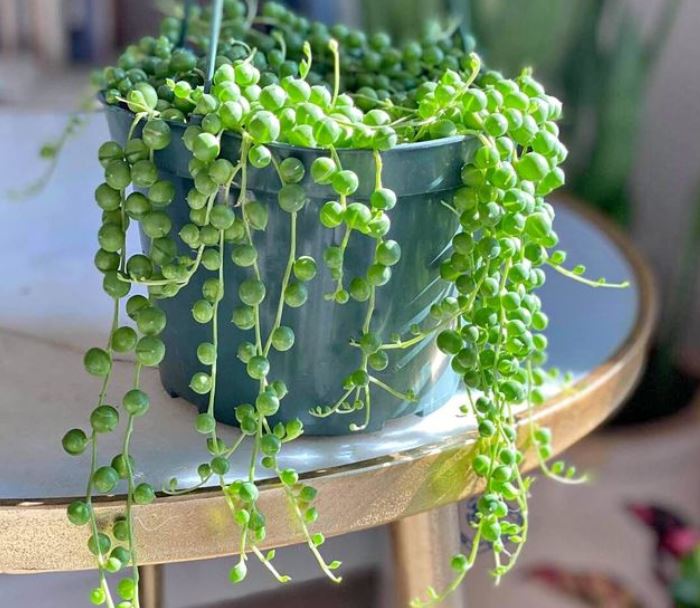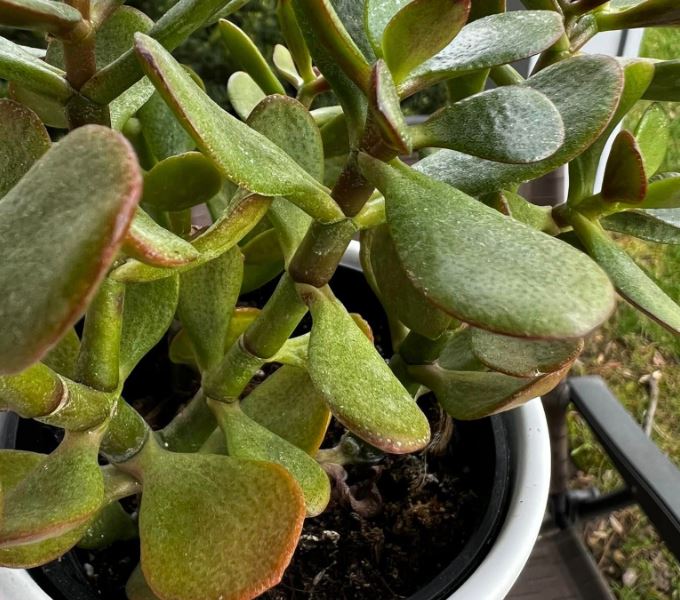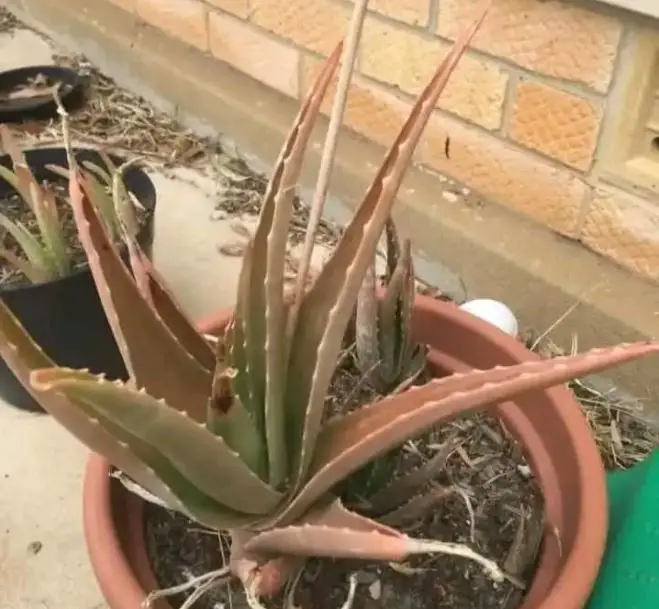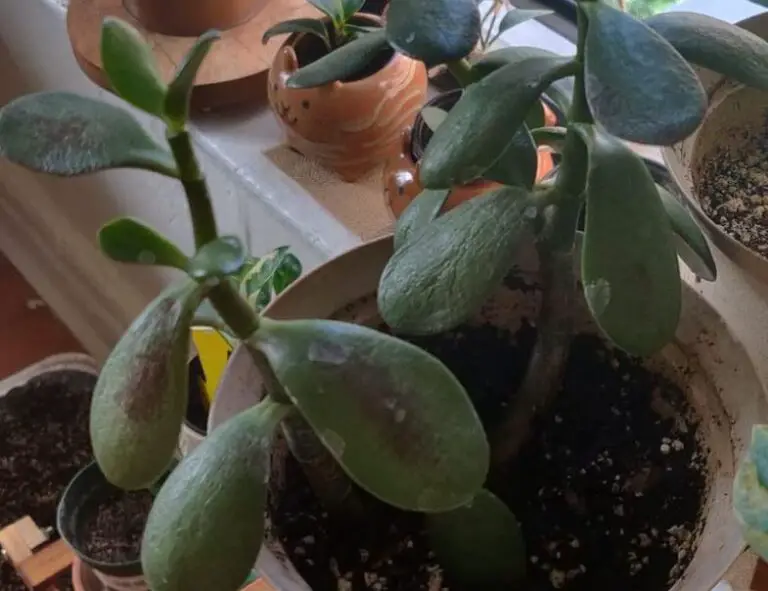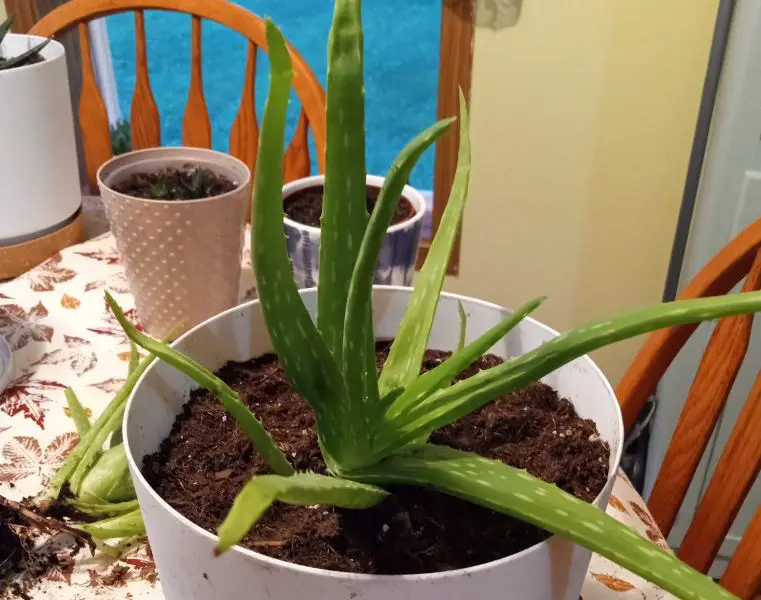Devil’s Backbone Plant Care – Growing and Propagation Guide
Devil’s backbone (Euphorbia tithymaloides) is a tropical plant native to warmer parts of North and Central America including Florida, Mexico, and Venezuela. It is a succulent of the spurge family that goes by many names including redbird flower, Christmas candle, Jacob’s ladder, and zig-zag plant among others.
Often found growing in rock gardens, devil’s backbone adds plenty of interest to the area. Its dramatic nature and ease of care also make it a beloved choice for indoor gardening. It looks amazing in a tall, upright planter but it can also be used as a border plant.
However, this plant is classified as a poisonous succulent. It contains compounds that can cause both topical and gastrointestinal irritation. Touching the milky sap may cause itchiness or blistering of the skin. Ingesting any part of the plant may cause vomiting, diarrhea, and pain in the mouth or throat.
Before we dive into care tips, let’s appreciate the devil’s backbone’s distinctive features. This plant has zigzagging stems, each with pairs of charming, fleshy leaves. During the flowering season, red birdlike whorls of bracts form at the tip of the stems but don’t last for a long time.
| Botanical name | Euphorbia tithymaloides |
| Common name | Devil’s backbone, zig-zag plant |
| Plant type | Tropical succulent |
| Mature size | 6 to 8 ft height, 18 to 24 inches wide |
| Bloom time | Spring and summer |
| Sun exposure | Bright indirect sun |
| Soil type | Sandy, well-drained, and nutrient-rich |
| Hardiness | USD Zones 9 – 10 |
| Toxicity | Toxic to humans and animals |
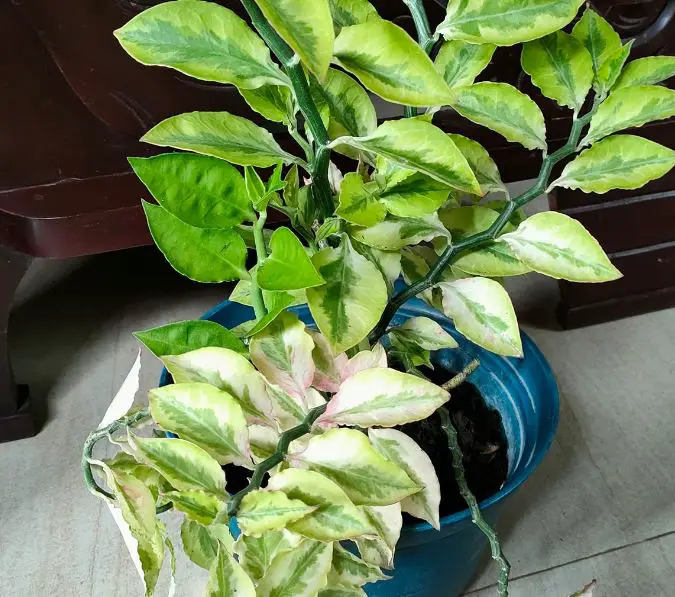
Devil’s backbone care instructions
Devil’s backbone is a low-maintenance plant suitable for any garden. As a tropical plant, it prefers warm conditions and a sunny area to grow in. The soil must be well-drained, and nutrient-rich. Watering should be regular but without getting the soil soggy.
Although devil’s backbone poisoning is almost never fatal, you must exercise caution when handling the plant. Further, keep it out of reach of children and domestic animals including cats, dogs, and horses.
Here are the basic care requirements for the zigzag succulent.
Lighting Requirements
Much like a prima donna, the devil’s backbone plant has its specific preferences for light. It thrives in bright, indirect light. Indoors, place it near a sunny window. However, it can tolerate lower light conditions and you can still place it at different corners of your home.
Like most indoor plants, the devil’s backbone needs adequate lighting for optimum growth. In places where light is not enough, this plant may develop unhealthy growth behavior. The spaces between leaves may get longer, resulting in a thin spindly appearance.
When natural light is not sufficient, it is necessary to add artificial grow lights. You may also gradually move etiolated plants to a sunnier location where they can receive at least 6 hours of direct sunlight daily.
Watering
To water or not to water? That is a critical question when it comes to growing the evil’s backbone plant. This plant can endure long periods without water, so it’s important to allow the soil to dry out between waterings. This helps in preventing root rot and other moisture-related issues.
Root rot occurs when damp conditions in the soil allow fungi and bacteria to flourish and damage the roots. This stops the roots from absorbing nutrients and water from the soil resulting in poor plant growth. Sometimes the plant may wilt and die when all the roots are damaged.
The best way to determine if you need to water your succulent is to check the soil moisture. You can dip your finger in the soil to test how dry it is or use a moisture meter. The rule of thumb is to water the devil’s backbone plant when the soil feels completely dry.
Soil
Well-draining soil is the key to keeping the devil’s backbone happy. Soils that retain moisture or easily get compacted can cause root rot. A cactus or succulent mix will suit this plant’s needs. The aim is to allow excess water to escape to prevent soggy roots.
Temperature
The devil’s backbone is a tough plant that can tolerate low temperatures of 50°F or a high temperature of 80°F with no major issues. However, the optimum temperature for this plant must range between 60 to 70°F.
When the outdoor temperature drops below 41°F, this plant should be moved indoors for overwintering. Place it in a location near a south-facing window to obtain as much sunlight as possible. Make sure to keep it away from drafts and extreme temperature fluctuations.
Fertilizer
Zigzag plant hardly needs supplemental nutrients to thrive. However, adding applying fertilizer during the growing season can boost the plant’s health. It’s recommended to use a balanced houseplant fertilizer diluted with water to half-strength and apply as directed on the packaging.
If you just repotted your plant, wait a couple of weeks before you start fertilizing. Further, do not fertilize the devil’s backbone plant during winter when the plant is dormant. Overfertilizing is also a serious problem as it can burn the plant’s roots.
Pruning
Devil’s backbone is a slow-growing plant and pruning is hardly necessary. However, you may need to remove any damaged stems during spring to encourage healthy growth. When cutting a stem, use sterile shears and remember to wear gloves to avoid contact with the plant’s milky latex which is poisonous.
Repotting
Jacob’s ladder should be repotted every 3 to 5 years or when the plant has outgrown its current pot. Use rich well-draining soil and a pot with drainage holes at the bottom. The best time to repot the devil’s backbone is during spring and summer when growth conditions are optimum.
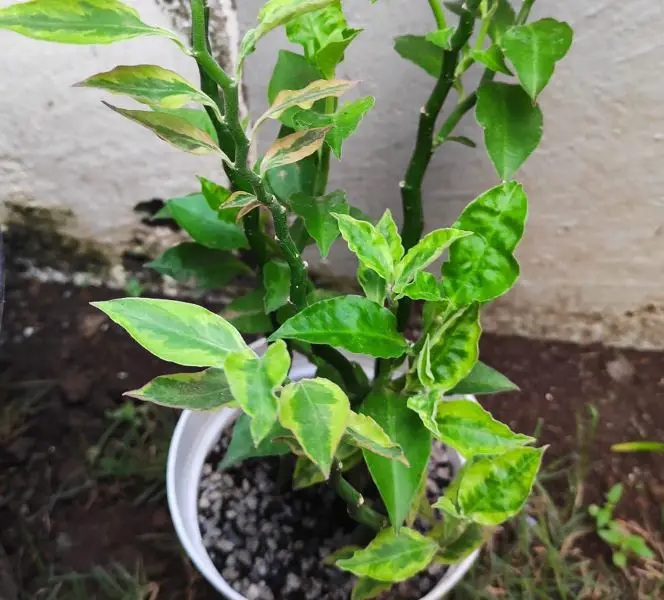
How to propagate devil’s backbone plant
The devil’s backbone is best propagated through stem cuttings. Seeds can be an option but they are rarely available. Additionally, they only stay viable for a short period of time. To propagate the devil’s backbone succulent you’ll need to gather the following;
- Sharp, clean scissors or pruning shears
- Small pots or containers with drainage holes
- Well-draining potting mix (cactus or succulent mix)
- Rooting hormone (optional)
Before you start the propagation, it’s important to wear your protective gloves to avoid any contact with the plant’s sap.
Propagation steps
- Choose a healthy devil’s backbone plant with strong stems. Make sure the plant is free from pests and diseases.
- Identify a stem on the parent plant that you want to propagate. The ideal stem for cutting should be healthy, mature, and about 4-6 inches long.
- Using sharp scissors or pruning shears, cut the selected stem just below a leaf node ( where the leaf meets the stem). Ensure that your cutting has at least a couple of leaves attached.
- Allow the cut end of the stem to dry for a day or two. This helps to prevent rotting when the cutting is planted.
- Dip the cut end of the stem in the rooting hormone if you have it. This is optional, but it can encourage faster root development.
- Fill your pot or container with a well-draining potting mix and insert the cut end of the stem into the soil, burying it about an inch or two deep.
- Water the soil lightly and place the pot in a location with bright, indirect light.
- Keep the soil consistently moist but not waterlogged. After a few weeks, the cutting should start developing roots.
- Once roots are established, you can transplant the young devil’s backbone into a larger pot or directly into the garden if desired.
- Continue to provide the new plant with the appropriate light and water conditions.
Common problems and what to do
Devil’s backbone plant can be susceptible to root rot if overwatered. Allow the soil to dry out between watering. However, if not watered enough, this plant can become dehydrated and shriveled. So. ensure that you water thoroughly, allowing water to drain from the bottom of the pot.
Too much direct sunlight can lead to sunburn. This may cause the leaves to turn yellow or brown and become crispy. So, make sure to place the devil’s backbone succulent in bright, indirect sunlight.
Pests such as aphids, mealybugs, and spider mites can infest the devil’s backbone plants. If suspected, quarantine the affected plant and use insecticidal soap or neem oil to treat the affected areas.
Final thought
Devil’s Backbone is a relatively hardy plant, but it’s essential to avoid overwatering, as it can lead to root rot. Adjust the watering frequency based on the specific needs of your growing environment. This plant needs adequate light to thrive and a constant warm temperature.
Since it contains toxic compounds, avoid any contact with its milky sap. Ingestion of any part including roots, leaves, or stems may also cause gastrointestinal irritation or pain. So keep it away from humans and other animals and wear gloves when handling it.
My name is Diane M Lewik, and I am the founder of this website. I am a degree holder in plant biology from the University of California – Berkeley. Over the years, I have cultivated a vast collection of succulents and I have learned a great deal about how to grow and care for these unique plants. Feel free to ask any questions in the comment section below.
